SEO
What It Really Is & How to Build One
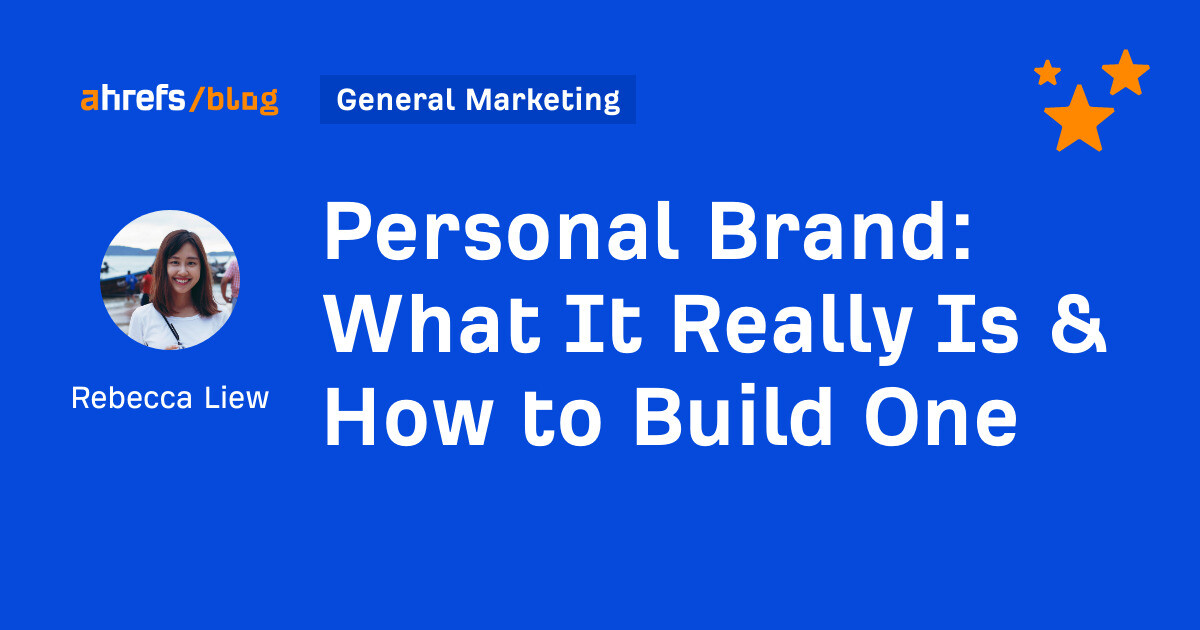
Building a personal brand is undeniably hard work, but it isn’t as tricky as you might think.
I spoke with two influencers—Wes Kao and Matt Diggity—for their best tips on establishing a name for yourself online.
A personal brand is how people perceive you and what you’re known for. It’s the skills, experience, and values that give you an edge over others.
Neuroscientist Andrew Huberman is one example. He helms and hosts the science/health podcast Huberman Lab, lectures at Stanford Medicine, and has earned media mentions from the likes of BBC, TIME, and more.
Andrew’s personal brand is built on his credibility and areas of expertise. Many of his posts attract thousands of likes and hundreds of comments on X and LinkedIn.
If we want to dig deeper, Maven and altMBA co-founder Wes Kao has a somewhat alternative take on the definition:
In my opinion, it’s better to reframe ‘personal branding’ into ‘personal credibility.’ Personal branding has a superficial undertone. It assumes you have your work, then you tack on an artificial layer of ‘branding’ to shape perceptions.
She suggests that personal credibility is about substance: Showing people what you do, how you think, and how you can contribute. Wes adds:
In this way, you build deeper connections with people who believe in your work—which means stronger relationships, more control, and more opportunities.
In this podcast interview snippet with Nick Bennett, SparkToro’s Amanda Natividad echoes Wes’ sentiment:
People generally don’t like the term [personal brand] because it sounds disingenuous and icky. Acknowledging the existence of your personal brand is admitting that you care what others think about you, and that you find ways to manage those expectations at scale.
Wild as it sounds, building a solid personal brand gives you more control over your life.
A strong following could:
- Expand your realm of influence, particularly in your area of expertise (i.e., be viewed as a subject matter expert).
- Boost your credibility, in turn allowing you to promote your company/product better.
- Build a loyal following independent of the company you’re working for (or if you own that company, create more positive sentiment towards it).
- Open doors to job, networking, and investment opportunities.
Chiangmai SEO conference founder Matt Diggity shares some excellent points in his Facebook post on the topic, too.


There’s no linear path to building your personal brand.
As a precursor to the below steps, let’s first talk about finding your “voice.”
Wes and Matt both emphasize the importance of staying true to yourself. That means not crafting an online persona of who you think you should be.
I try to write like how I sound in person. Talking and writing are different media, so you shouldn’t try to match the two in a literal sense, but you want to capture your overall spirit. For example, I have a hint of snark in my writing because that’s how I sound in person.
Matt echoes this sentiment:
How I talk on the internet is how I talk IRL. If I’m not having a f**king blast on my YouTube videos, I won’t do them. It has to be fun.
Keep this idea in mind as you go through the steps below.
Step 1: Position yourself
Think of yourself as a product: What are your strengths, obsessions, and areas of expertise?
If you’re well-versed in technical SEO or a seasoned entrepreneur, these might be your unique selling points.
From there, double down on something you would be excited to think, write, and talk about for years—because “it will likely take years to get to where you want to go,” says Wes.
As an (optional) next step, consider solidifying your position with a spiky POV—a term coined by Wes, and which she cautions should be used with care.
A spiky POV is not about a contrarian hot take for the sake of it. In 2023, social platforms are flooded with hot takes and generic advice. I think about respecting the intelligence of my audience and teaching them something they don’t already know. A true spiky POV is rooted in deep expertise, including recognizing the limitations and counterpoints of your idea. This builds your reputation as someone who is rigorous and worth the time to engage with.
Here’s a LinkedIn post by Wes that combines all of the above: a unique perspective backed by her personal experiences, with a takeaway for the audience too. In other words—a spiky, worthy POV.
Step 2: Start sharing publicly
You already knew this, but social media platforms are one of the best ways to get growth and build your name. It’s your chance to build your reputation in a public arena.
Wes, Amanda, and Matt each utilized a combination of online channels to promote their voice and content. It’s one of the first things you should do—because your content is really only as good as its reach.
This is the first thing I did to build a personal brand and authority in the SEO industry, and I still do it to this day…
Take an hour a week, go to SEO social media hangouts (SEO Facebook groups, Twitter, LinkedIn, etc) and go from top-to-bottom answering people’s questions.…
— Matt Diggity (@mattdiggityseo) September 27, 2023
This doesn’t mean cross-posting your content across more platforms than you can manage, of course.
Study where your target audience spends most of their time, then hone in on those platforms (ideally, stick to no more than 2-3).
In Matt’s case, his followers are primarily on Twitter, Facebook, and YouTube—and that’s where his SEO-led content thrives.
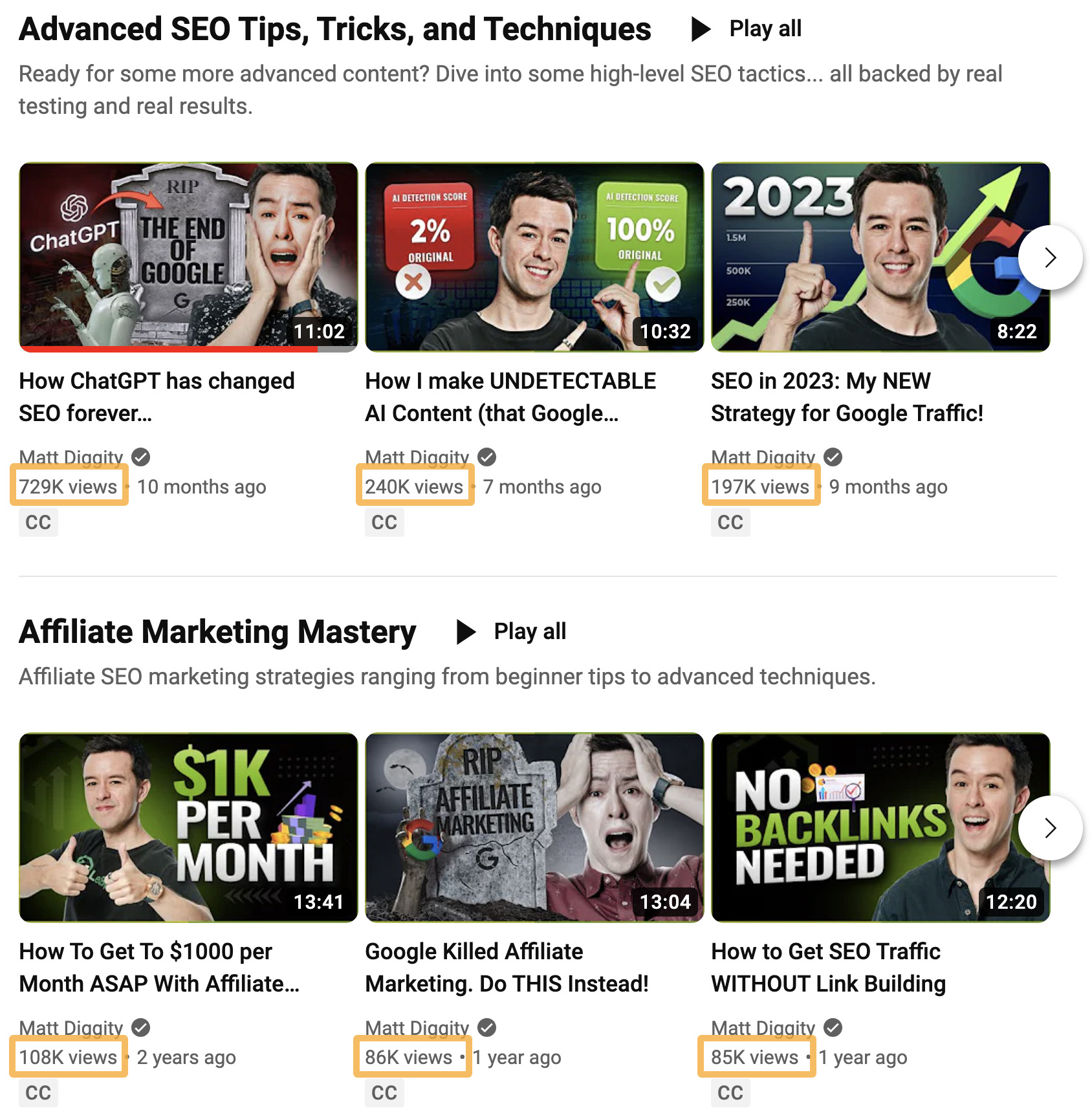

If creating whole posts from scratch seems daunting, start by commenting thoughtfully in relevant online communities. Obviously, do it with heart:
This is the first thing I did to build a personal brand and authority in the SEO industry, and I still do it to this day…
Take an hour a week, go to SEO social media hangouts (SEO Facebook groups, Twitter, LinkedIn, etc) and go from top-to-bottom answering people’s questions.…
— Matt Diggity (@mattdiggityseo) September 27, 2023
Here are some simple ways to start.
LinkedIn: Contribute to a collaborative article
You might have seen these articles floating around LinkedIn—perhaps even been invited to add your insights to them.
These blog posts are similar to Wikipedia pages: LinkedIn users build on each AI-generated article with their perspectives, and readers can choose to react to these additions or engage with the content.


Here’s an example of what a contribution looks like:


Reddit: Weigh in on discussions
- Go to a relevant subreddit, e.g. r/bigSEO
- Sort by “Top” and “This Week”
- Browse the questions or discussions and offer your two cents where relevant.


Ride on trending topics
Found an interesting insight on X or someplace else? Turn it into a poll, question, or post. (Be sure to also tag and credit the author!)
Bring it all together
If some of your responses or posts get traction, repurpose those answers into new content: a blog post, video, or series of social posts.
(PSST: Learn more about my process behind curating and repurposing content for Ahrefs’ X account.)
This segues into our next and final step:
Step 3: Double down on what works
By now, you should have an idea of which topics you’re most comfortable discussing at length—and what resonates most with your target audience.
You can further maximize your reach by doubling down on the things that have brought you success. Or, more specifically, by repurposing popular content in other formats and creating more content about similar things.
For instance, we turned this popular video on how to use ChatGPT for SEO into a Twitter thread and LinkedIn post—and later, a blog post.




Wes has also done this plenty with her “eaten the bear” analogy over the years. She first wrote about it in this 2019 blog post, rewrote it in 2023, and shares variations of the analogy on LinkedIn and X every few months.
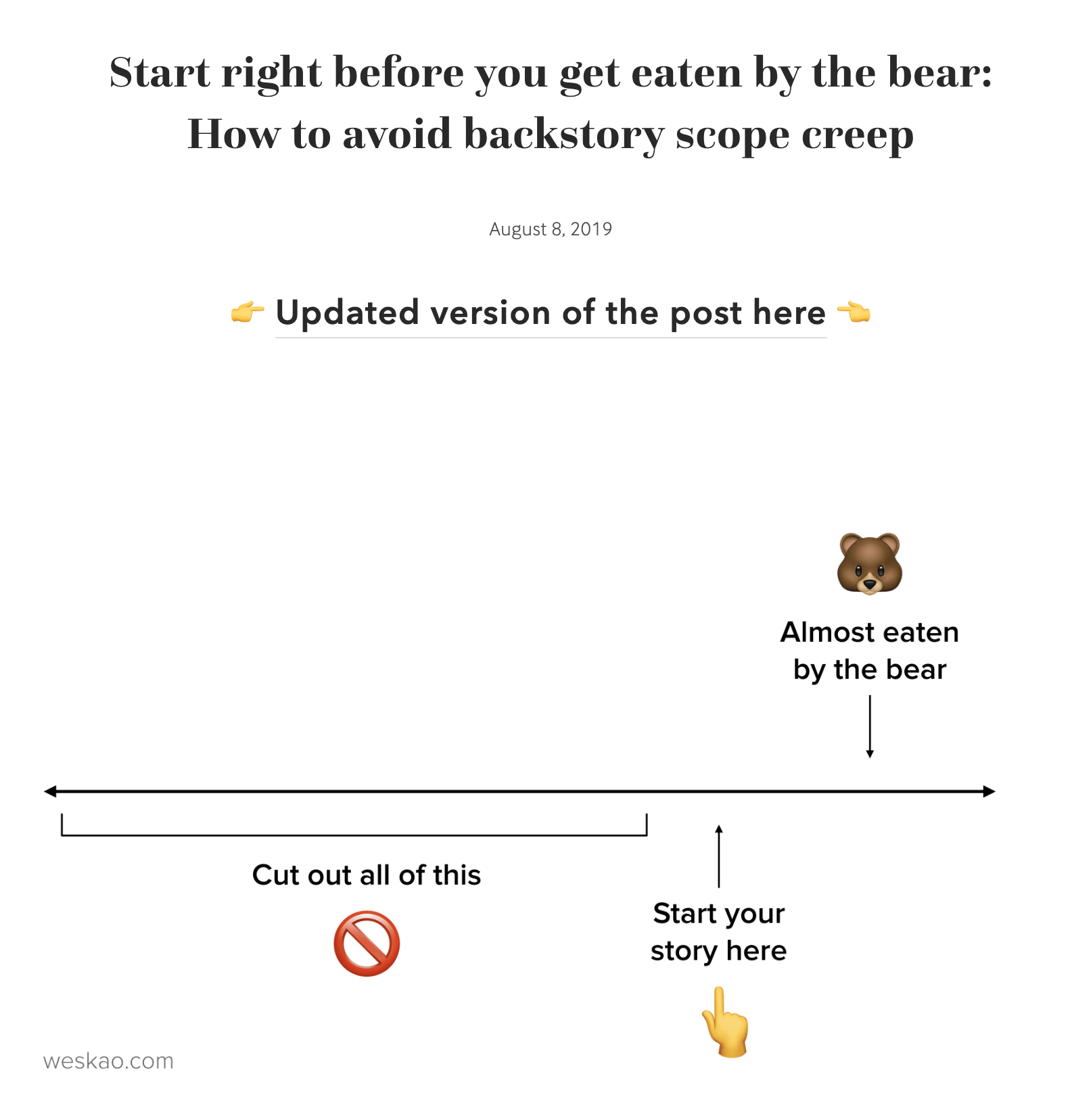

Each time, these posts garner hundreds or thousands of likes
Too much backstory is one of the biggest killers of good stories.
Backstory scope creep is real. We’ve all been there: Long-winded, stream of conscious explanations—all in the name of “giving context.“
I’ve been guilty of it myself.
The solution?
Minimum viable backstory pic.twitter.com/XFe2wAJysg
— Wes Kao 🏛 (@wes_kao) October 3, 2023
Don’t let your success die there, though. You can find more content ideas that will resonate with your audience by doing some keyword research around your topic. Here’s how:
- Plug your target topic into Ahrefs’ Keywords Explorer
- Go to the Matching terms report
For example, if we enter “chatgpt seo,” we see that people are searching for ChatGPT prompts for SEO and ChatGPT SEO extensions:
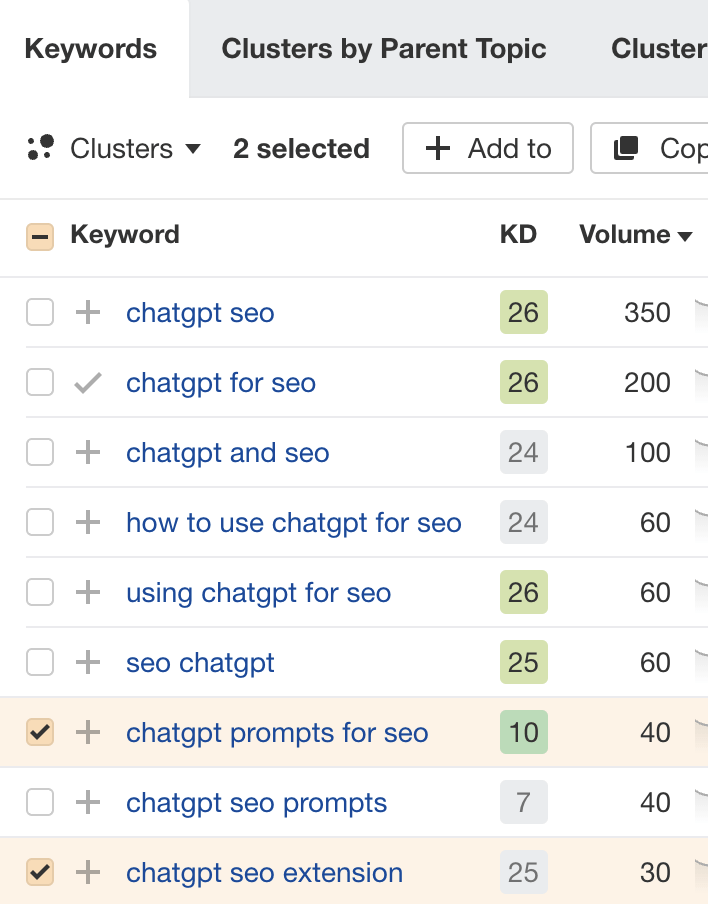

Given how our audience is interested in ChatGPT and SEO, these would be great topics to create content about—whether that be social media posts, videos, blog posts, or something else.
If you don’t have a paid account with us, you can plug your topic into our free keyword generator tool to view related phrases/questions.
Extra tips to build your personal brand
We mentioned some of these in some shape or form earlier, but they’re worth expanding on.
Maintain human connections
Who are you without the people who consume your content? Engage consistently with your followers and others’ content. Human connections are worth their weight in gold when you’re trying to get your personal brand off the ground.
Maintain consistency across your social media profiles
This means using the same profile picture across all platforms, and a standardized bio so others can quickly get a sense of who you are and what you often post about.
Jack Appleby is a great example. The creator/consultant is behind Future Social, an independent social strategy newsletter with 56,000+ subscribers.
Notice how he maintains consistency on X and LinkedIn:
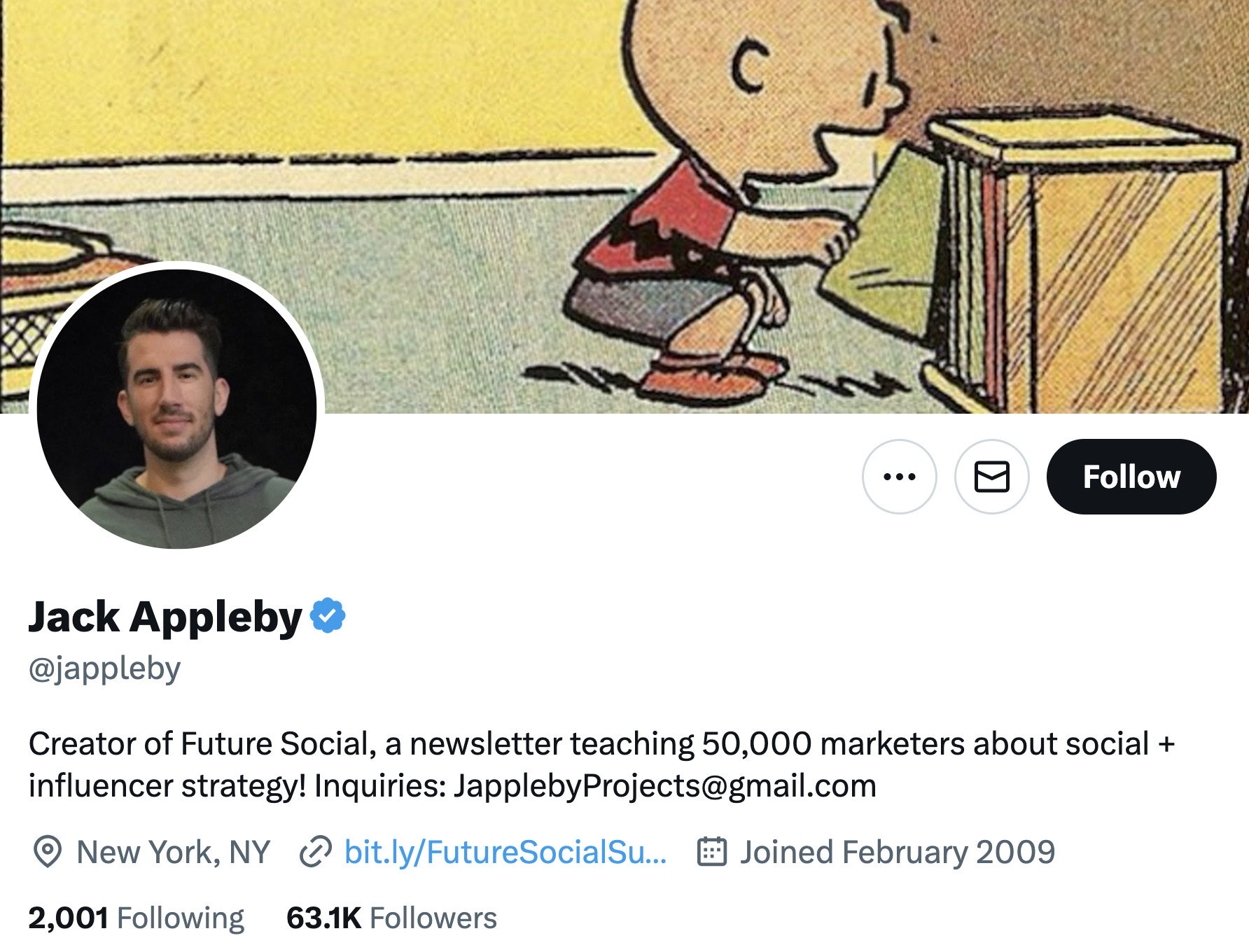



Ahrefs’ Tim Soulo further explains the importance of your profile picture in personal branding here:
Your profile pic is your “personal branding” tool. (duh!)
My journey so far:
2009 – “I have no idea what I’m doing;“
2014 – I want to stand out & be memorable;
2018 – I want to look provocative;
2020 – I want to look professional.I can expand this into a thread if you want 😉 pic.twitter.com/W7FtZTcYGO
— Tim Soulo 🇺🇦 (@timsoulo) September 14, 2020
Be yourself
Remember how Wes and Matt shared the importance of staying true to yourself? We couldn’t emphasize that enough.
Final thoughts
These steps aren’t exhaustive, obviously. To truly stand out online, Wes suggests having a combination of these things: social proof, good design sense, strong writing, interesting insights, and a track record of contribution.
As she puts it:
All these things will make people think, ‘This person knows their craft.’
Have a thought about this blog post? Ping me on X.
SEO
Google Cautions On Blocking GoogleOther Bot

Google’s Gary Illyes answered a question about the non-search features that the GoogleOther crawler supports, then added a caution about the consequences of blocking GoogleOther.
What Is GoogleOther?
GoogleOther is a generic crawler created by Google for the various purposes that fall outside of those of bots that specialize for Search, Ads, Video, Images, News, Desktop and Mobile. It can be used by internal teams at Google for research and development in relation to various products.
The official description of GoogleOther is:
“GoogleOther is the generic crawler that may be used by various product teams for fetching publicly accessible content from sites. For example, it may be used for one-off crawls for internal research and development.”
Something that may be surprising is that there are actually three kinds of GoogleOther crawlers.
Three Kinds Of GoogleOther Crawlers
- GoogleOther
Generic crawler for public URLs - GoogleOther-Image
Optimized to crawl public image URLs - GoogleOther-Video
Optimized to crawl public video URLs
All three GoogleOther crawlers can be used for research and development purposes. That’s just one purpose that Google publicly acknowledges that all three versions of GoogleOther could be used for.
What Non-Search Features Does GoogleOther Support?
Google doesn’t say what specific non-search features GoogleOther supports, probably because it doesn’t really “support” a specific feature. It exists for research and development crawling which could be in support of a new product or an improvement in a current product, it’s a highly open and generic purpose.
This is the question asked that Gary narrated:
“What non-search features does GoogleOther crawling support?”
Gary Illyes answered:
“This is a very topical question, and I think it is a very good question. Besides what’s in the public I don’t have more to share.
GoogleOther is the generic crawler that may be used by various product teams for fetching publicly accessible content from sites. For example, it may be used for one-off crawls for internal research and development.
Historically Googlebot was used for this, but that kind of makes things murky and less transparent, so we launched GoogleOther so you have better controls over what your site is crawled for.
That said GoogleOther is not tied to a single product, so opting out of GoogleOther crawling might affect a wide range of things across the Google universe; alas, not Search, search is only Googlebot.”
It Might Affect A Wide Range Of Things
Gary is clear that blocking GoogleOther wouldn’t have an affect on Google Search because Googlebot is the crawler used for indexing content. So if blocking any of the three versions of GoogleOther is something a site owner wants to do, then it should be okay to do that without a negative effect on search rankings.
But Gary also cautioned about the outcome that blocking GoogleOther, saying that it would have an effect on other products and services across Google. He didn’t state which other products it could affect nor did he elaborate on the pros or cons of blocking GoogleOther.
Pros And Cons Of Blocking GoogleOther
Whether or not to block GoogleOther doesn’t necessarily have a straightforward answer. There are several considerations to whether doing that makes sense.
Pros
Inclusion in research for a future Google product that’s related to search (maps, shopping, images, a new feature in search) could be useful. It might be helpful to have a site included in that kind of research because it might be used for testing something good for a site and be one of the few sites chosen to test a feature that could increase earnings for a site.
Another consideration is that blocking GoogleOther to save on server resources is not necessarily a valid reason because GoogleOther doesn’t seem to crawl so often that it makes a noticeable impact.
If blocking Google from using site content for AI is a concern then blocking GoogleOther will have no impact on that at all. GoogleOther has nothing to do with crawling for Google Gemini apps or Vertex AI, including any future products that will be used for training associated language models. The bot for that specific use case is Google-Extended.
Cons
On the other hand it might not be helpful to allow GoogleOther if it’s being used to test something related to fighting spam and there’s something the site has to hide.
It’s possible that a site owner might not want to participate if GoogleOther comes crawling for market research or for training machine learning models (for internal purposes) that are unrelated to public-facing products like Gemini and Vertex.
Allowing GoogleOther to crawl a site for unknown purposes is like giving Google a blank check to use your site data in any way they see fit outside of training public-facing LLMs or purposes related to named bots like GoogleBot.
Takeaway
Should you block GoogleOther? It’s a coin toss. There are possible potential benefits but in general there isn’t enough information to make an informed decision.
Listen to the Google SEO Office Hours podcast at the 1:30 minute mark:
Featured Image by Shutterstock/Cast Of Thousands
SEO
AI Search Boosts User Satisfaction

A new study finds that despite concerns about AI in online services, users are more satisfied with search engines and social media platforms than before.
The American Customer Satisfaction Index (ACSI) conducted its annual survey of search and social media users, finding that satisfaction has either held steady or improved.
This comes at a time when major tech companies are heavily investing in AI to enhance their services.
Search Engine Satisfaction Holds Strong
Google, Bing, and other search engines have rapidly integrated AI features into their platforms over the past year. While critics have raised concerns about potential negative impacts, the ACSI study suggests users are responding positively.
Google maintains its position as the most satisfying search engine with an ACSI score of 81, up 1% from last year. Users particularly appreciate its AI-powered features.
Interestingly, Bing and Yahoo! have seen notable improvements in user satisfaction, notching 3% gains to reach scores of 77 and 76, respectively. These are their highest ACSI scores in over a decade, likely due to their AI enhancements launched in 2023.
The study hints at the potential of new AI-enabled search functionality to drive further improvements in the customer experience. Bing has seen its market share improve by small but notable margins, rising from 6.35% in the first quarter of 2023 to 7.87% in Q1 2024.
Customer Experience Improvements
The ACSI study shows improvements across nearly all benchmarks of the customer experience for search engines. Notable areas of improvement include:
- Ease of navigation
- Ease of using the site on different devices
- Loading speed performance and reliability
- Variety of services and information
- Freshness of content
These improvements suggest that AI enhancements positively impact various aspects of the search experience.
Social Media Sees Modest Gains
For the third year in a row, user satisfaction with social media platforms is on the rise, increasing 1% to an ACSI score of 74.
TikTok has emerged as the new industry leader among major sites, edging past YouTube with a score of 78. This underscores the platform’s effective use of AI-driven content recommendations.
Meta’s Facebook and Instagram have also seen significant improvements in user satisfaction, showing 3-point gains. While Facebook remains near the bottom of the industry at 69, Instagram’s score of 76 puts it within striking distance of the leaders.
Challenges Remain
Despite improvements, the study highlights ongoing privacy and advertising challenges for search engines and social media platforms. Privacy ratings for search engines remain relatively low but steady at 79, while social media platforms score even lower at 73.
Advertising experiences emerge as a key differentiator between higher- and lower-satisfaction brands, particularly in social media. New ACSI benchmarks reveal user concerns about advertising content’s trustworthiness and personal relevance.
Why This Matters For SEO Professionals
This study provides an independent perspective on how users are responding to the AI push in online services. For SEO professionals, these findings suggest that:
- AI-enhanced search features resonate with users, potentially changing search behavior and expectations.
- The improving satisfaction with alternative search engines like Bing may lead to a more diverse search landscape.
- The continued importance of factors like content freshness and site performance in user satisfaction aligns with long-standing SEO best practices.
As AI becomes more integrated into our online experiences, SEO strategies may need to adapt to changing user preferences.
Featured Image: kate3155/Shutterstock
SEO
Google To Upgrade All Retailers To New Merchant Center By September

Google has announced plans to transition all retailers to its updated Merchant Center platform by September.
This move will affect e-commerce businesses globally and comes ahead of the holiday shopping season.
The Merchant Center is a tool for online retailers to manage how their products appear across Google’s shopping services.
Key Changes & Features
The new Merchant Center includes several significant updates.
Product Studio
An AI-powered tool for content creation. Google reports that 80% of current users view it as improving efficiency.
This feature allows retailers to generate tailored product assets, animate still images, and modify existing product images to match brand aesthetics.
It also simplifies tasks like background removal and image resolution enhancement.
Centralized Analytics
A new tab consolidating various business insights, including pricing data and competitive analysis tools.
Retailers can access pricing recommendations, competitive visibility reports, and retail-specific search trends, enabling them to make data-driven decisions and capitalize on popular product categories.
Redesigned Navigation
Google claims the new interface is more intuitive and cites increased setup success rates for new merchants.
The platform now offers simplified website verification processes and can pre-populate product information during setup.
Initial User Response
According to Google, early adopters have shown increased engagement with the platform.
The company reports a 25% increase in omnichannel merchants adding product offers in the new system. However, these figures have yet to be independently verified.
Jeff Harrell, Google’s Senior Director of Merchant Shopping, states in an announcement:
“We’ve seen a significant increase in retention and engagement among existing online merchants who have moved to the new Merchant Center.”
Potential Challenges and Support
While Google emphasizes the upgrade’s benefits, some retailers, particularly those comfortable with the current version, may face challenges adapting to the new system.
The upgrade’s mandatory nature could raise concerns among users who prefer the existing interface or have integrated workflows based on the current system.
To address these concerns, Google has stated that it will provide resources and support to help with the transition. This includes tutorial videos, detailed documentation, and access to customer support teams for troubleshooting.
Industry Context
This update comes as e-commerce platforms evolve, with major players like Amazon and Shopify enhancing their seller tools. Google’s move is part of broader efforts to maintain competitiveness in the e-commerce services sector.
The upgrade could impact consumers by improving product listings and providing more accurate information across Google’s shopping services.
For the e-commerce industry as a whole, it signals a continued push towards AI-driven tools and data-centric decision-making.
Transition Timeline
Google states that retailers will be automatically upgraded by September if they still need to transition.
The company advises users to familiarize themselves with the new features before the busy holiday shopping period.
Featured Image: BestForBest/Shutterstock
-

 SEARCHENGINES6 days ago
SEARCHENGINES6 days agoBillions Of Google goo.gl URLs To 404 In The Future
-
SEARCHENGINES5 days ago
Daily Search Forum Recap: July 22, 2024
-

 SEARCHENGINES7 days ago
SEARCHENGINES7 days agoGoogle Core Update Coming, Ranking Volatility, Bye Search Notes, AI Overviews, Ads & More
-

 SEO6 days ago
SEO6 days ago11 Copyscape Alternatives To Check Plagiarism
-

 SEO6 days ago
SEO6 days agoGoogle Warns Of Last Chance To Export Notes Search Data
-
SEARCHENGINES4 days ago
Daily Search Forum Recap: July 23, 2024
-

 AFFILIATE MARKETING6 days ago
AFFILIATE MARKETING6 days agoThe Top 5 AI Tools That Can Revolutionize Your Workflow and Boost Productivity
-

 SEO4 days ago
SEO4 days agoSystem Builders – How AI Changes The Work Of SEO


















